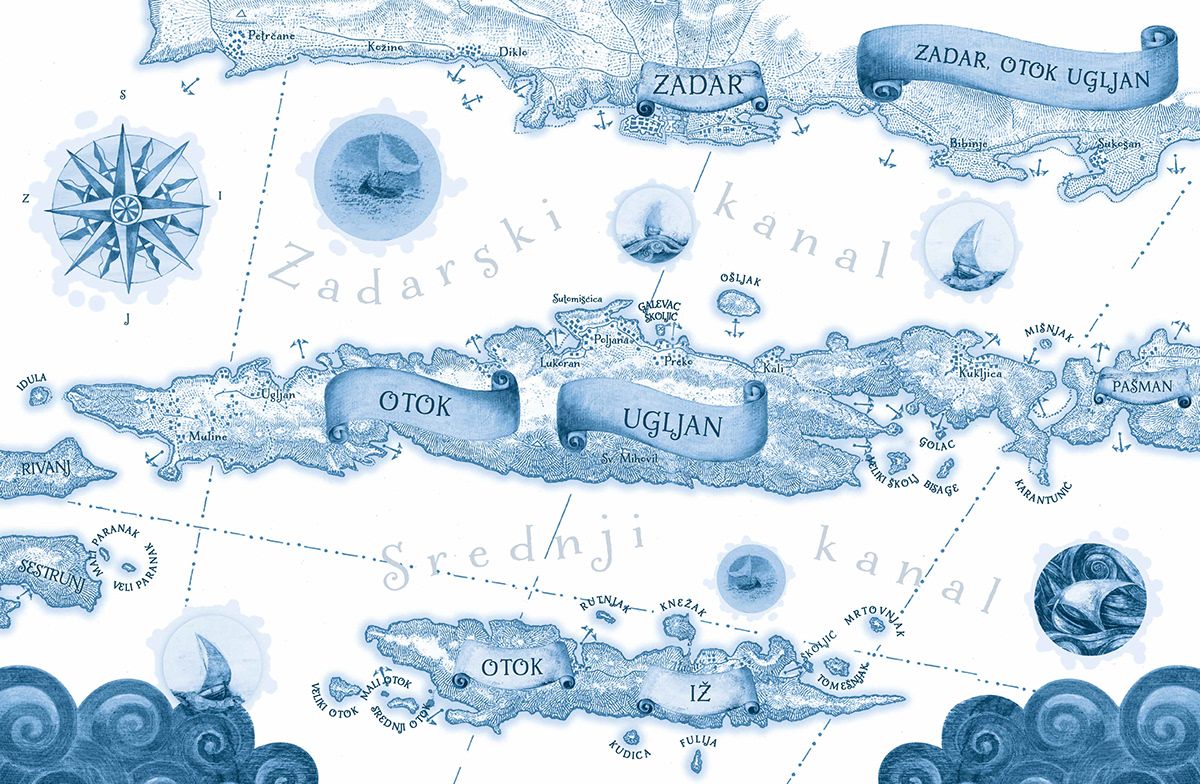Manuela Vladić-Maštruko
" Little White Laundress Fish"


The project is inspired by and dedicated to the laundresses from the village Preko on the island of Ugljan, Croatia. The backbone of the project is the picture-book of the same name, created with a desire to present to young generations, in an appropriate way, the cultural and traditional heritage of Ugljan, Preko and the tragic event in which, during a storm at sea in 1891, the laundresses lost their lives. Although it was intended for the youth, it is suitable for all generations, because it deals with universal, but also sensitive and difficult topics. The visually rich illustrations and the story are followed by the Preko Time machine and glossary where the lifestyle, work and survival in Preko and Zadar are described in detail, as well as theterms from the local dialect. The project includes children, youth and adults meeting with the author of the project Manuela Vladić-Maštruko, organizing exhibitions and art and language workshops related to the content of the picture-book.

The Little White Laundress Fish picture-book and the project of the same name done by the academic painter Manuela Vladić-Maštruko from Zadar are carried out in cooperation with numerous cultural and educational institutions in Zadar County and beyond, with the support of the Municipality of Preko. The backbone and platform of the project consist of a picture-book which, with rich illustrations and story dating from the end of the 19th century, includes the Preko Time machine and glossary, explaining the lifestyle, work and survival in the village Preko, and islands Ugljan, Galevac and the town Zadar, which is traditionally connected to these islands. The project is inspired by and dedicated to the laundresses from Preko and the tragic event in which in 1891, during a storm at sea, 16 laundresses lost their lives. The picture-book is designed as a synergy of historical facts, traditional customs and local dialects with artistic imagination. Elements of wonder are exchanged with conditions and depictions of ordinary life, and the tension between the backbone and the creation is resolved in a fairy-tale epilogue.




The island’s cultural heritage tells us about the lastingness of men on the island, their diligence, struggle, ingenuity, defiance of adversity and misfortune in a sea setting. The sea rewards the islanders, but it also brings limitations and scarcity. These conditions have shaped the lifestyle, work, survival and cultural customs on the island. The way of doing laundry has incorporated itself in the cultural and traditional heritage of Ugljan. It was done by the laundresses from Preko (the local term for laundress – lavandijere comes from the Italian word lavandaia). They have been doing it since ancient times, notably in the period between the two world wars. Many wealthy families lived in Zadar, which throughout history was under different rules (from Italian to Austro-Hungarian), and demanded all kinds of services from the locals. Doing laundry was a strenuous and poorly paid job with which the island woman, in addition to all the work in the house and in the field, tried to get a few extra coins for the family. The laundresses travelled by boat - gajeta to get the laundry from wealthy families. The boat docked in the city port in the early morning. The laundresses would scatter around the city, collect laundry from door to door in wicker baskets and linen bundles.

The story takes place at the end of the 19th century, in 1891, when Croatia was under Austro-Hungarian rule. In order to create the story and illustrations, the author researched and reconstructed in detail the lifestyle and work (as well as the differences between male and female jobs, duties and positions in society), cultural and religious customs (from children's games to wedding ceremonies), as well as the differences and connections between Preko and Zadar. The research included the appearance of folk costumes (everyday and formal), the combing style, the way the clothes and footwear were made (handicrafts and traditional crafts) in the village and in Zadar, rural, sacral and urban architecture, marine and island flora and fauna (species of wild plants and those grown in home gardens and fields, species of fish and domestic animals), nautical charts and types of sea vessels, as well as the schooling and education in that area and time. The research included a study of the traditional way of doing laundry; from the way the soap was made to the process of soaking, washing and drying laundry and the cycle of pick-up and delivery of dirty and clean laundry from the island to the city of Zadar. It also included a representation of the 16 laundresses and the tragic event from 1891, and the manner and reason for their death in written sources from that time, as well as the local dialect in which the story was partly written, in addition to the standard Croatian language.





















All lesser-known terms, toponyms and words in the local dialect are found in the Preko time machine and dictionary (in order to avoid burdening the story with it) and offer detailed pictorial and textual descriptions.








